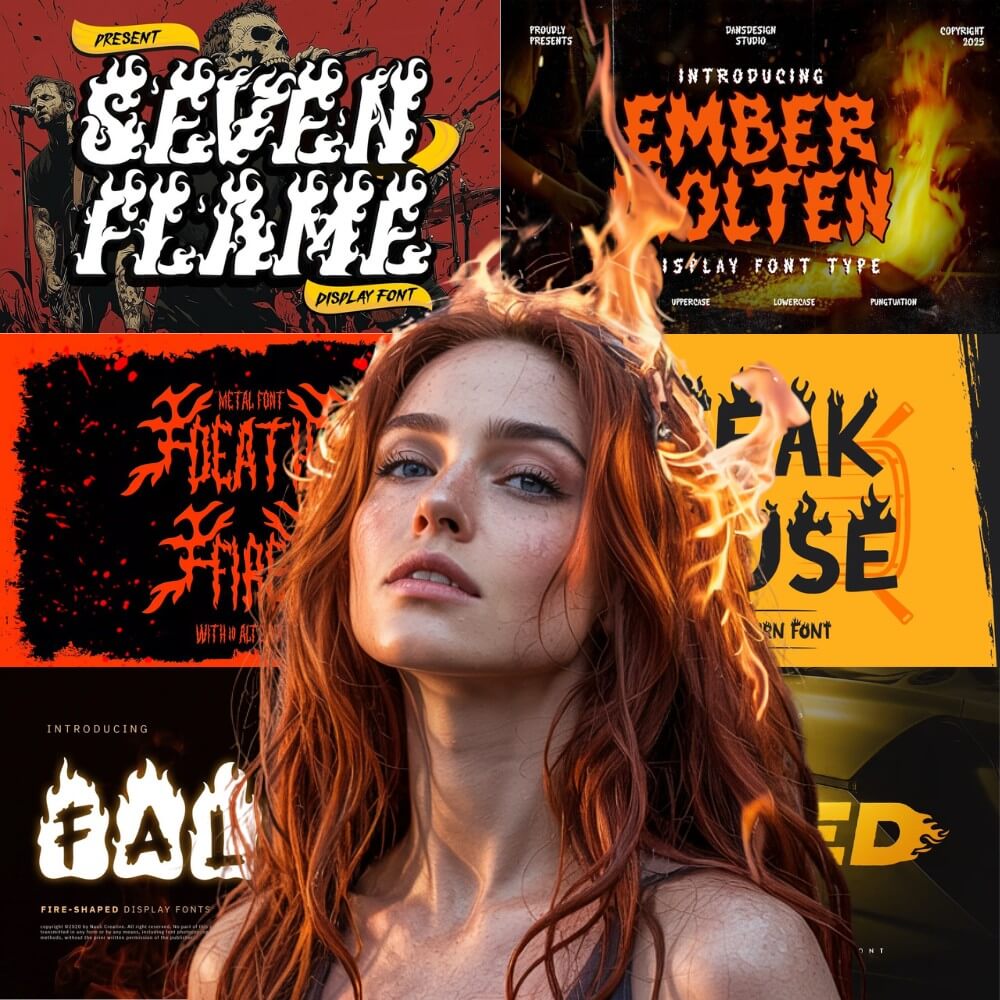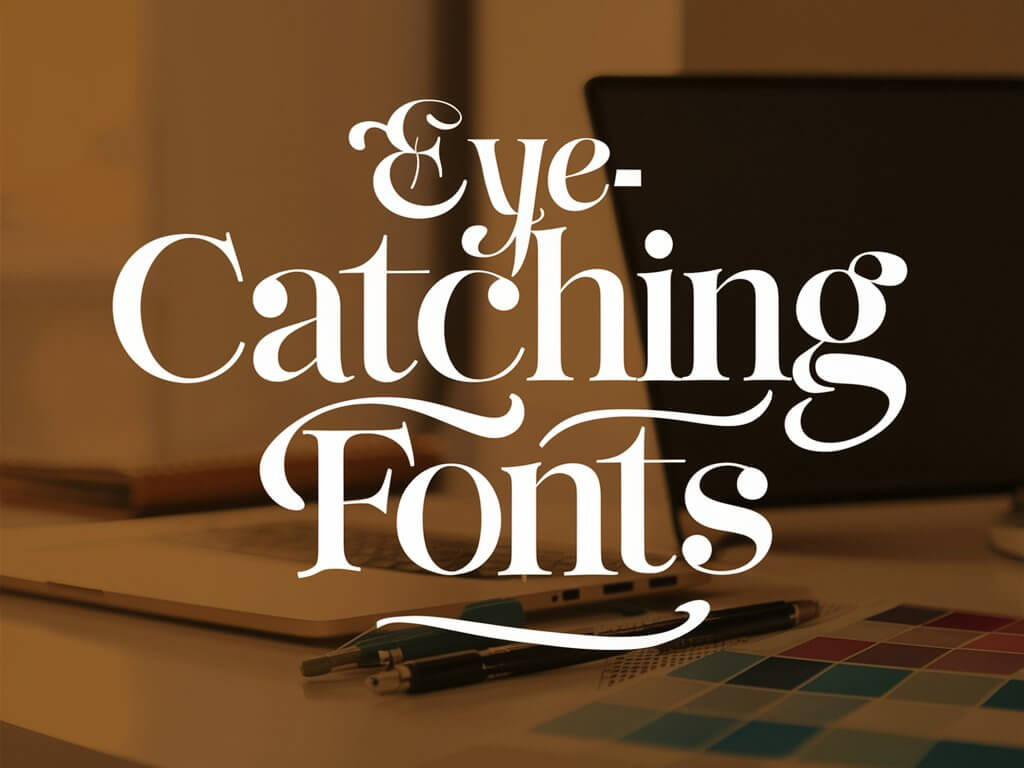7+ Shadow Font Downloads | Outline & Drop Shadow Fonts
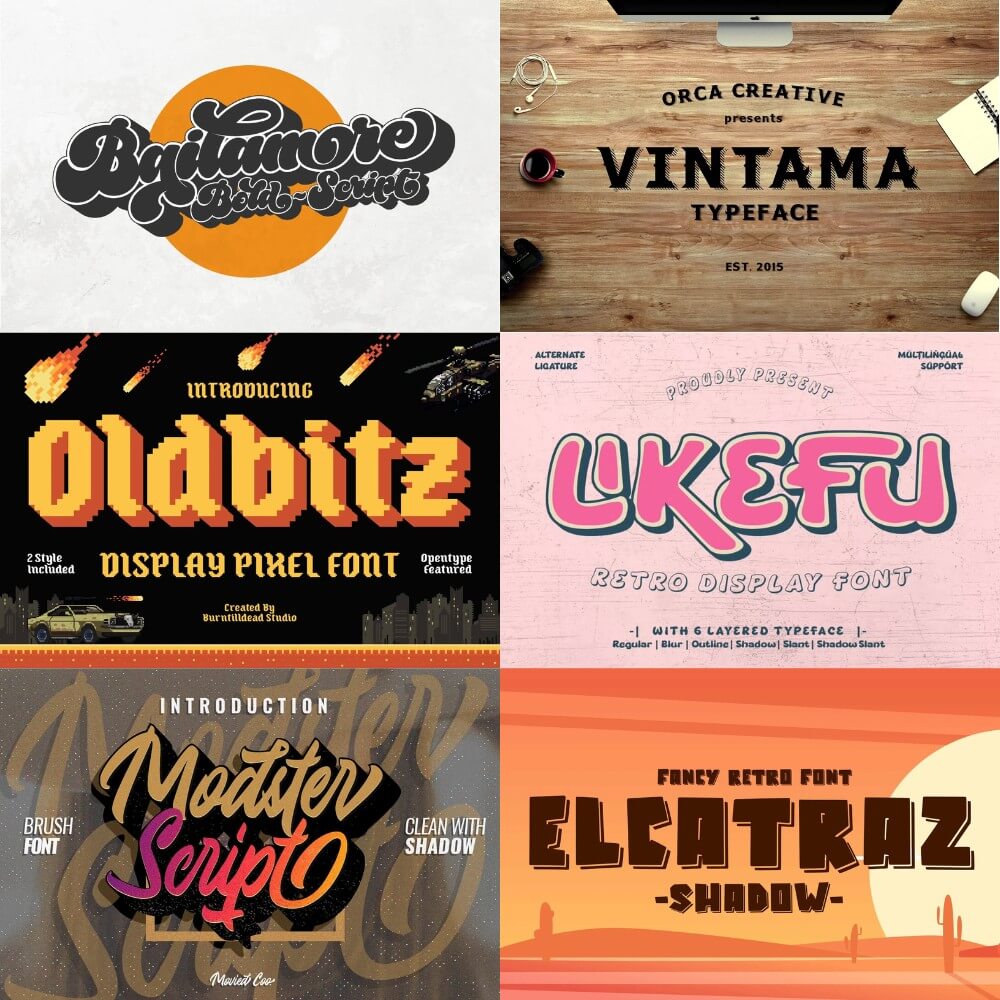
This website contains affiliate links. As an Amazon affiliate, I earn from qualifying purchases, our own services and products. This tutorial is an independent guide and is not affiliated with, sponsored, or endorsed by Canva Pty Ltd. All product names, logos, and interface screenshots are used for identification and educational purposes only. Canva is a registered trademark of Canva Pty Ltd. Screenshots are used under fair use for the purpose of commentary and instruction.
Fonts are the silent heroes of design. But when you add a shadow, something magical happens. Letters stop being flat ink on a page and start to pop.
This article is for you if you’ve ever wondered how to make your typography stand out without looking overdone.
We’re diving deep into shadow fonts, drop shadows, outlines, and the subtle art of adding dimension to your text.
Whether you’re a beginner experimenting in Canva or a pro using Adobe, this guide will help you find the perfect shadow font, where to download it for free, and how to use it like a designer.
What Font Has A Shadow and Why Does It Matter?
A shadow font is more than just text with a dark blur behind it. It’s a typeface designed to look like it has depth, often built with layers or outlines to simulate a 3D effect.
The goal isn’t just decoration; it’s storytelling. A well-chosen shadow font can make your message feel nostalgic, playful, or bold, depending on your design project.
Think about vintage signs, old comic books, or retro advertisements. All of them rely on shadow letters to grab attention.
Shadow fonts give that same tactile quality to modern digital work, bridging the gap between print and pixels. It’s not just about the look; it’s about the feeling it creates.
1. Vintama
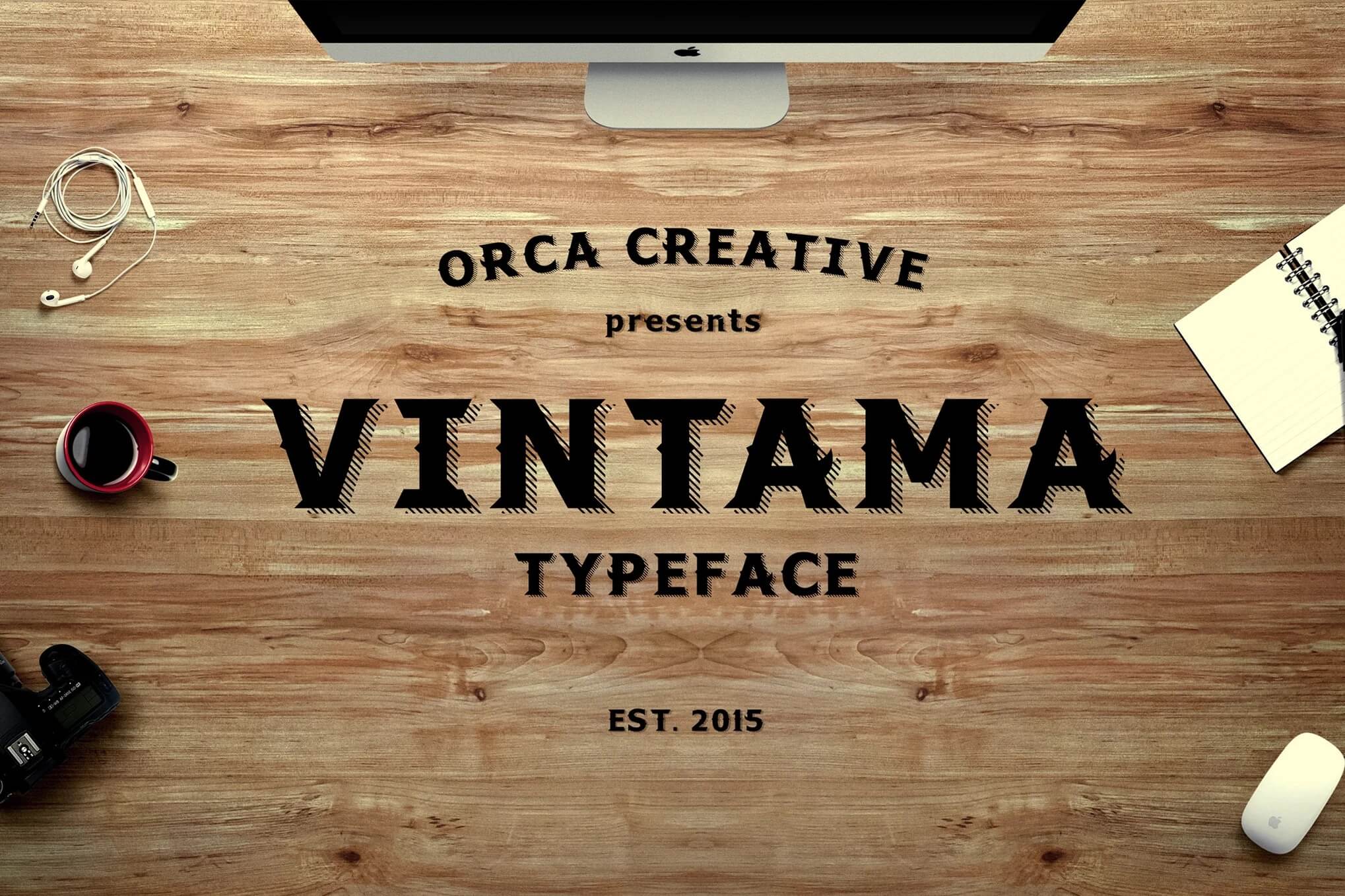
Vintama is a bold serif with a vintage, slightly rugged vibe that feels perfect for posters, t shirts, and nostalgic branding. It comes in regular and shadowed versions for added character and pairs beautifully with retro or handcrafted design styles.
2. Oldbitz
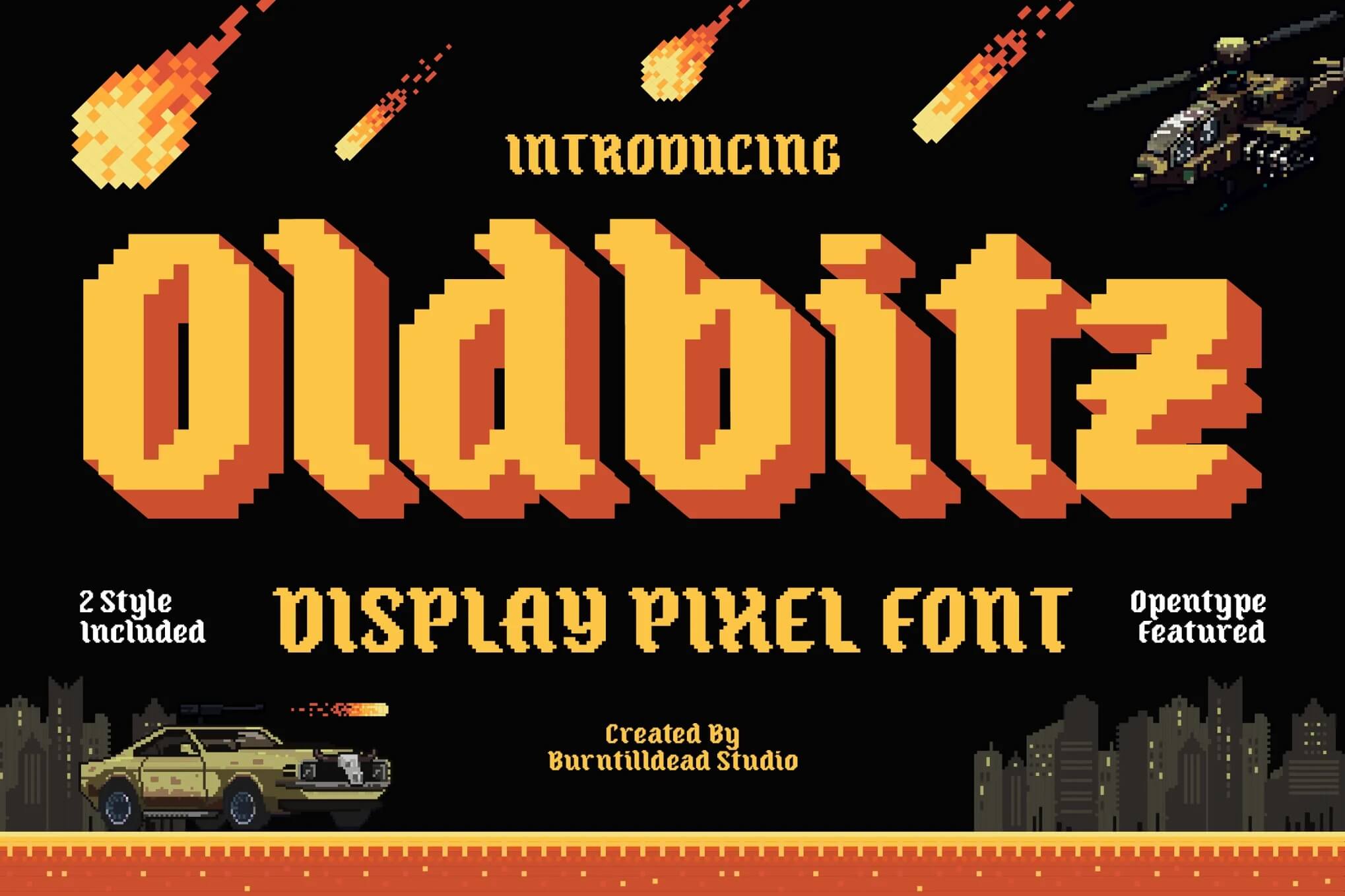
Oldbitz is a bold, retro display font that brings classic arcade pixel vibes and a hint of gothic charm. It comes in Regular and Shadow styles so you can choose clean, strong titles or playful 3D arcade flair for posters, album art, games, and more.
3. Bailamore – Bold-Script

Bailamore is a bold retro script with a lively, handcrafted vibe. It includes regular, outline, and shadow styles plus many ligatures and alternates so your lettering looks polished and expressive. Great for logos, sports themes, and bold display work.
4. Likefu – Retro Display Font
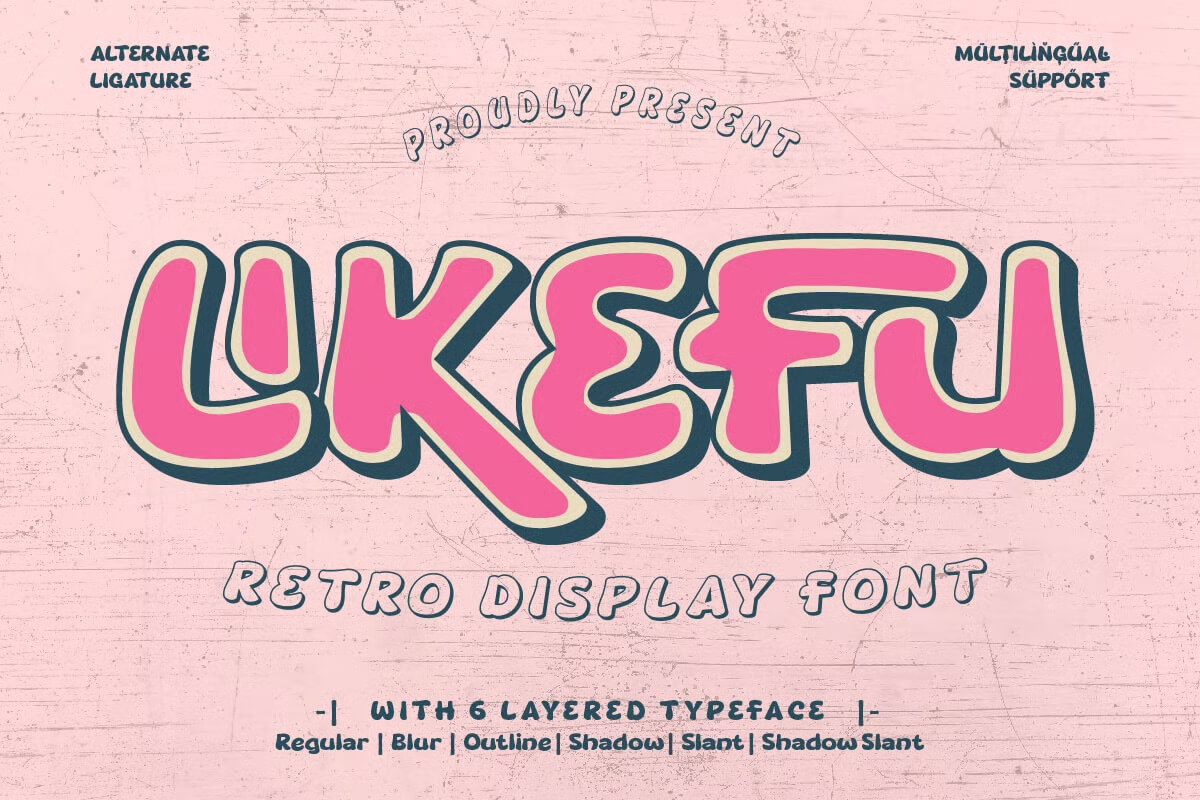
Likefu brings a warm retro vibe with clean, nostalgic letterforms that feel both classic and playful. It’s perfect for eye catching headlines, posters, and logos when you want vintage charm without feeling outdated. Works great at large sizes for bold impact.
5. Modster Script + Shadow
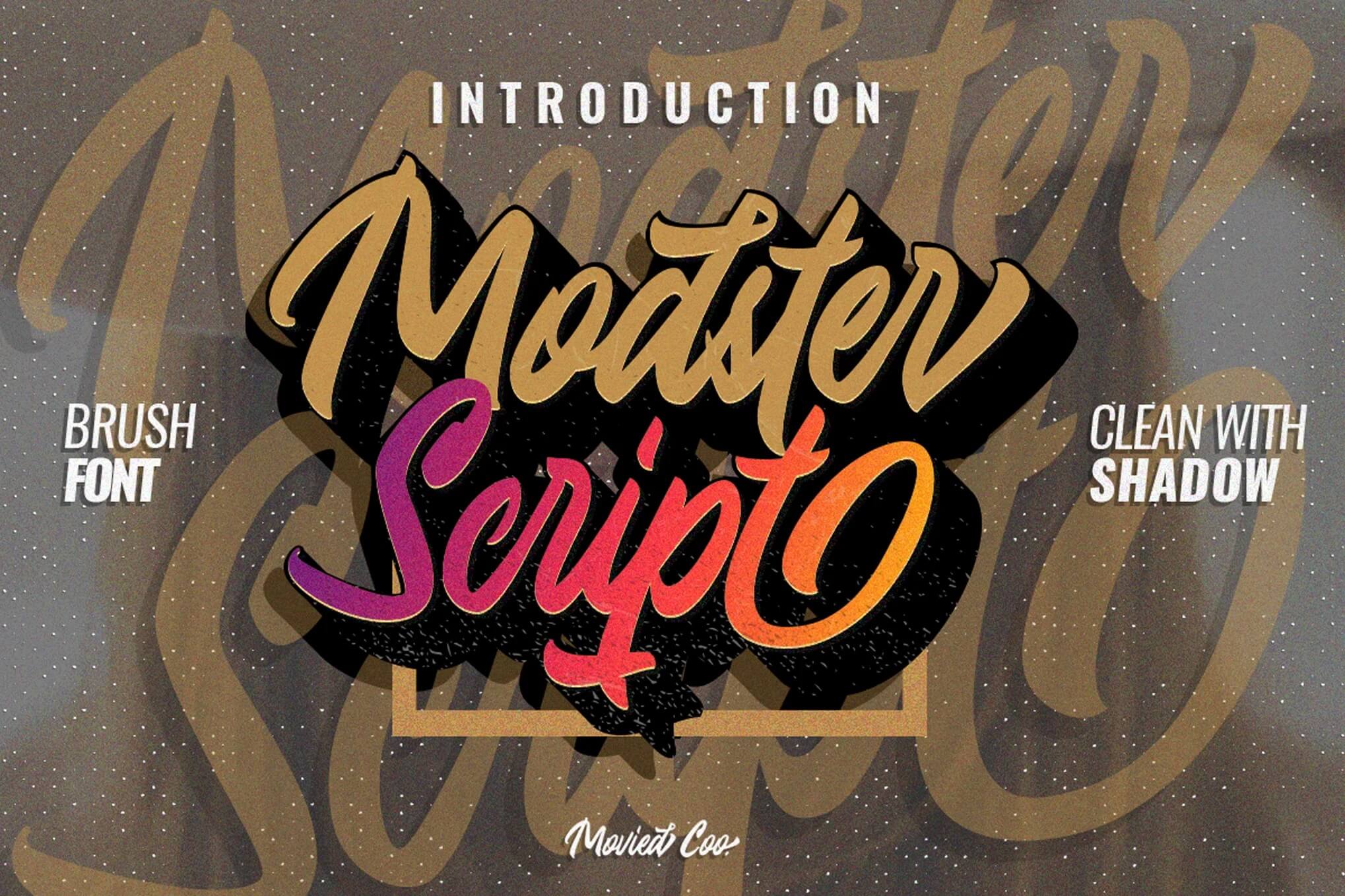
Modster Script + Shadow feels like playful street style brought to handwriting. It mixes organic brush strokes with neat alternates and shadow layers so your logos posters and social posts look crafted yet modern. Works great for branding and eye catching headlines.
6. Geist Typeface

Geist is a bold sans serif display font with multiple styles that feel modern and playful. It includes shadow, inline, and vintage versions that work best large, plus uppercase and numbers for striking headlines and poster designs.
7. Golden Silver

This bold, blocky display font feels tough and attention grabbing, perfect for construction or heavy duty themes. It has a gritty shadowed edge that gives each letter depth and impact, making headlines and posters feel urgent, strong, and unmistakably bold.
8. Elcatraz Shadow – Fancy Retro Font
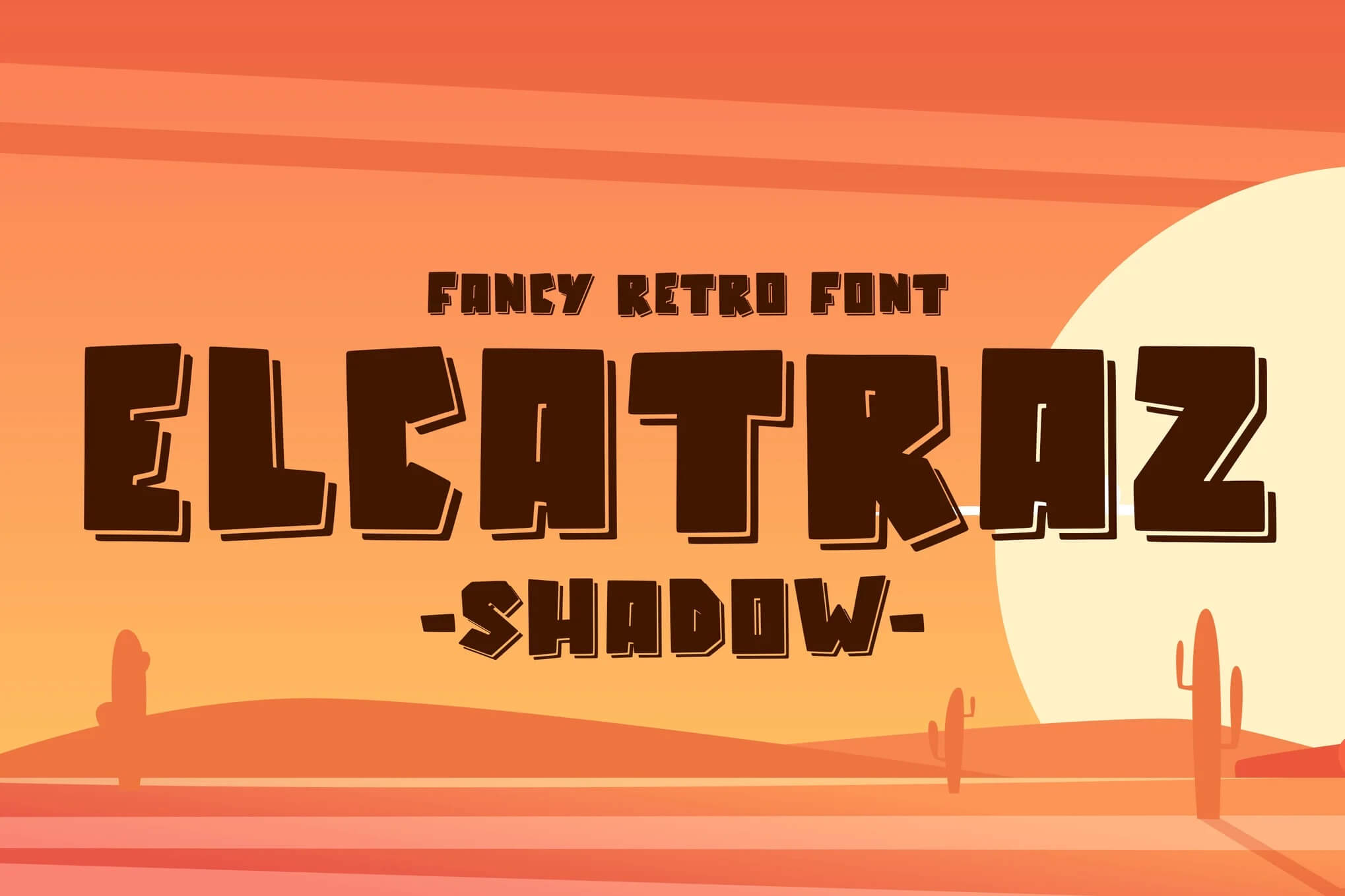
Elcatraz Shadow is a playful display sans that brings instant charm to DIY projects and packaging. It feels friendly and quirky while staying bold enough for logos and social posts. Works across design apps and includes web fonts plus multilingual support for easy use.
How Does the Shadow Effect Enhance Typography?
The shadow effect adds visual hierarchy. It helps your eye know where to look first. When used right, a drop shadow font can make titles jump off the screen or page without screaming for attention.
Designers use shadows to create depth and texture. The trick is in balance. Too strong, and it looks heavy; too subtle, and it’s invisible.
But when you get it right, it gives your typography a tactile realism that flat text can’t replicate. Whether you’re designing a poster, logo, or digital banner, a little dimension goes a long way.
What Makes a Great and Creative Shadow Font?
A great shadow font balances style and readability. It should be bold enough to hold its structure even when layered but not so complex that it distracts from the message.
Look for fonts that come with layered font versions, one for the base, another for the shadow. This makes it easy to adjust color, alignment, and offset for the perfect 3D effect.
You’ll also want to consider the font’s style:
- Retro and vintage shadow fonts add nostalgia and warmth.
- Modern shadow fonts feel clean and bold, perfect for branding.
- Comic or fun fonts bring a playful vibe that’s great for kids’ designs or creative projects.
A selection of free shadow fonts is available online through sites like fonts · 1001 fonts and FontSpace, so you can explore without committing to a purchase.
How to Create Shadow Fonts Without Overcomplicating Things
Creating your own shadow font doesn’t have to be complicated. You can achieve the look in almost any design software by adding layers.
In Adobe Illustrator or Photoshop, duplicate your text, move the bottom layer slightly, and change its color to a darker shade for an instant shadow.
In Cricut Design Space, the same principle applies: use the offset tool to create that subtle depth for your cutting or print design projects.
If you want a more dramatic 3D effect, you can duplicate the layer multiple times and shift each copy slightly more than the last. This method works beautifully for bold titles or signage where you want that pop of dimension.
What Are the Best Shadow Fonts to Download for Free?
You don’t need a big budget to make your designs look professional. There’s a wide selection of free shadow fonts available online, from retro and vintage styles to modern sans-serifs and script fonts.
Some great fonts to add to your toolkit include:
- Lobster Shadow, a playful script font with natural curves and contrast.
- Bungee Shade, perfect for advertising or bold poster designs.
- Riffic Bold, a fun, rounded typeface that brings energy to titles.
- Shadow Hand, hand-drawn shadow letters for a creative, handmade feel.
When you download these from trusted websites like FontSpace, you can experiment with different effects, textures, and color combinations until you find the perfect font for your project.
How to Use Shadow Fonts in Modern Design Projects
The key to using shadow fonts in a modern way is restraint. You’re not trying to recreate a carnival poster from 1950 (unless that’s your aesthetic). The idea is to use the shadow as an element that enhances your design, not dominates it.
Pair your shadow font with simple backgrounds and complementary typography. For example, if your title uses a bold 3D shadow font, balance it with a clean sans-serif body font for contrast. This creates harmony while keeping your design fresh.
A good rule: every design should have one “star” and one “supporting actor.” The shadow font can be the star, but only if everything else steps back.
When Should You Use Vintage or Retro Shadow Fonts?
Sometimes, nostalgia sells. Vintage and retro shadow fonts work beautifully when you’re creating a design that needs warmth, familiarity, or that handmade touch. Think print design for a coffee shop menu, an event poster, or a personal logo.
Retro fonts often have exaggerated curves and softer shadows, creating a charmingly imperfect look. They remind people of sign painters, theater marquees, and analog days, and that’s exactly what makes them unique.
If your design project is modern, use a retro shadow font in a small accent, like a headline or logo mark, instead of everywhere. It gives your work a nostalgic twist without feeling outdated.
How to Layer Fonts for a 3D Effect
Layering is the secret sauce to professional-looking shadow designs. By stacking multiple layers of the same font, you can create depth and dimension without special software or plugins.
Start with a bold base layer, duplicate it, and move the second one slightly down or sideways to simulate shadow. Adjust the color contrast to match your background, darker shadows on light backgrounds and lighter shadows on dark ones.
If you want a real 3D effect, use multiple layers with gradually darker tones. It’s a simple trick that turns flat text into something you can almost touch.
What Are the Best Fonts to Add for Cricut Design and Craft Projects?
Crafters love shadow fonts because they’re perfect for Cricut Design Space. Whether you’re making vinyl decals, t-shirts, or wall art, a font with built-in shadow or outline saves you time.
When choosing fonts to add, look for layered versions that allow you to separate colors for cutting or printing. Fonts like “Bebas Neue Shadow” or “Lemon Milk 3D” make stunning, readable text for physical projects. They also scale well, meaning your type stays crisp even when enlarged.
If you want to experiment, use your Cricut’s offset tool to add your own shadow effect. It gives you total control over spacing and style.
How Do You Choose the Perfect Font Type for Your Project?
Choosing the perfect font depends on your message. Fonts carry emotion. A shadow font can make something feel fun, serious, or retro in an instant.
Ask yourself:
- What do I want people to feel when they see this design?
- Is it bold and confident? Soft and elegant? Playful and approachable?
If your goal is a strong, attention-grabbing look, go with a bold, thick shadow font. For something softer, a script font with subtle depth works beautifully. You can download a variety of fonts online, so don’t be afraid to experiment until you find your style.
How to Use Color and Texture with Shadow Fonts
Color can make or break a shadow design. High contrast, like black shadow on white text, creates instant readability, while soft gradients or textured shadows add sophistication.
Try experimenting with color overlays or textured backgrounds. It can make even a free shadow font look premium. If you’re working on a modern design project, use subtle gradients and avoid heavy shadows that can make text harder to read.
Adding texture is another way to bring personality. Think chalkboard shadows, metallic outlines, or grain overlays. Small touches make your typography feel alive.
Why Shadow Fonts Work in Advertising and Branding
Shadow fonts have been a staple in advertising for decades. They command attention. They make logos, packaging, and posters feel dynamic and memorable. The effect creates a sense of motion, as if the letters are stepping forward.
In branding, shadow fonts are often used sparingly, maybe for a logo wordmark or a campaign headline. They tell the audience, “Look here. This matters.” When you create shadow fonts with intention, they can elevate your entire visual identity.
The Final Word: Making Fonts Work for You
When you’re scrolling through FontSpace or fonts · 1001 fonts, it’s easy to get overwhelmed by endless options.
But here’s the truth. The best shadow fonts aren’t about what’s trending. They’re about what fits your message.
Whether you’re designing online or for print design, start simple. Choose one shadow font, test it in your layout, and see how it feels.
Let the text breathe. Adjust spacing, color, and depth until it tells your story. That’s how you level up your typography game, not by downloading a thousand fonts, but by learning how to make one look unforgettable.
This website contains affiliate links. As an Amazon affiliate, I earn from qualifying purchases, our own services and products. This tutorial is an independent guide and is not affiliated with, sponsored, or endorsed by Canva Pty Ltd. All product names, logos, and interface screenshots are used for identification and educational purposes only. Canva is a registered trademark of Canva Pty Ltd. Screenshots are used under fair use for the purpose of commentary and instruction.

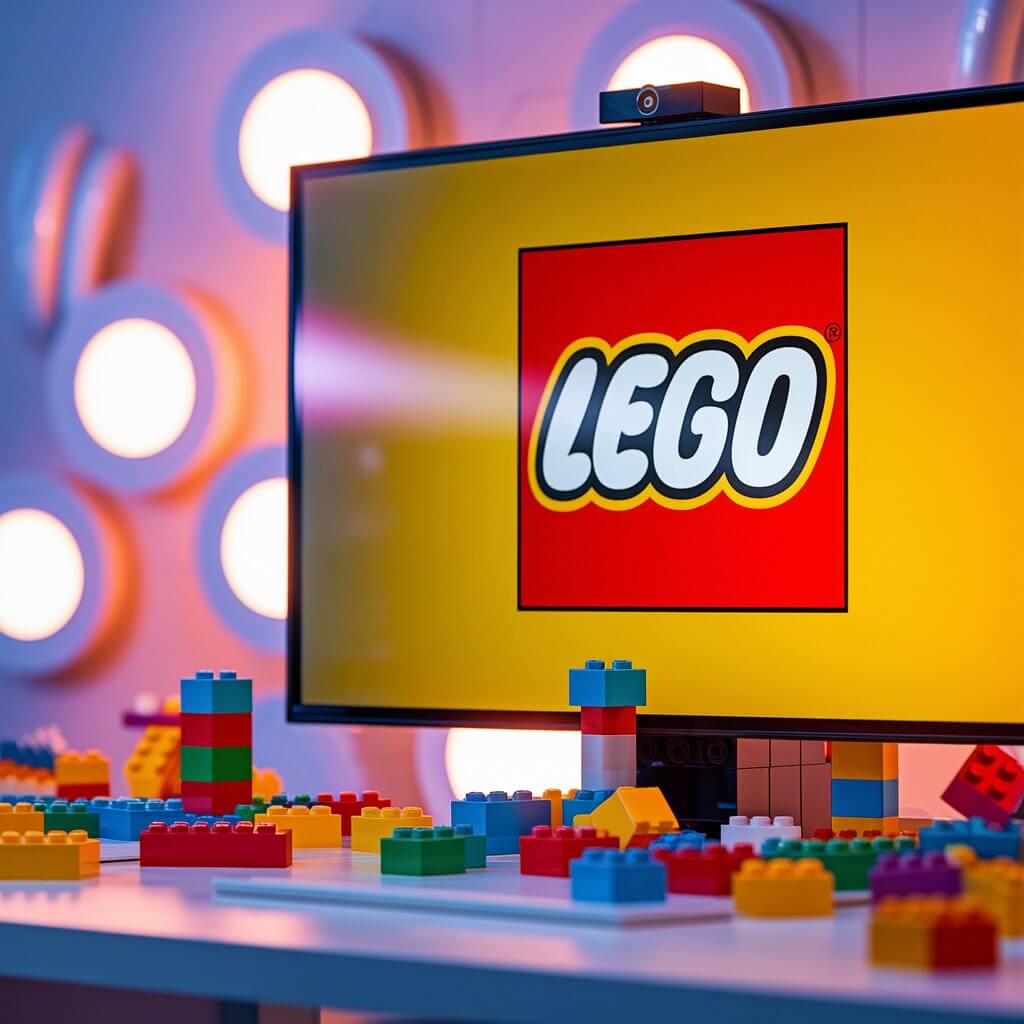
![Font with Lights and Neon Fonts [Not Vector] 11 A person holds a disco ball, surrounded by colorful neon signs displaying various typography styles and vibrant party-themed designs.](https://funnelgraphic.com/wp-content/uploads/2025/12/fonts-with-lights-featured.jpg)

